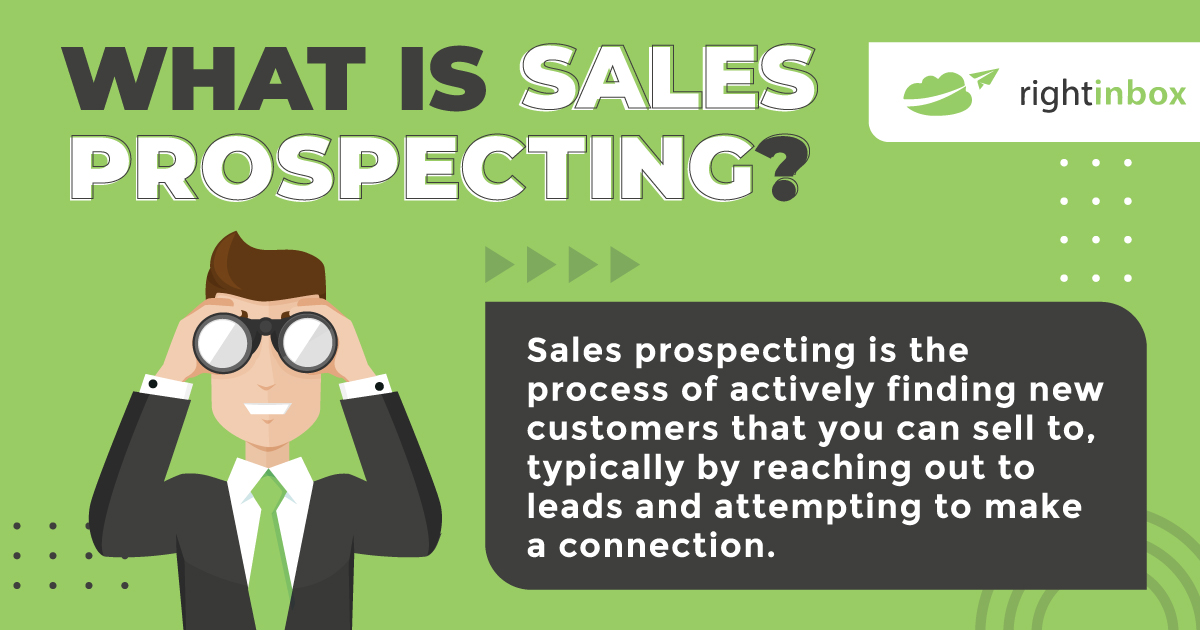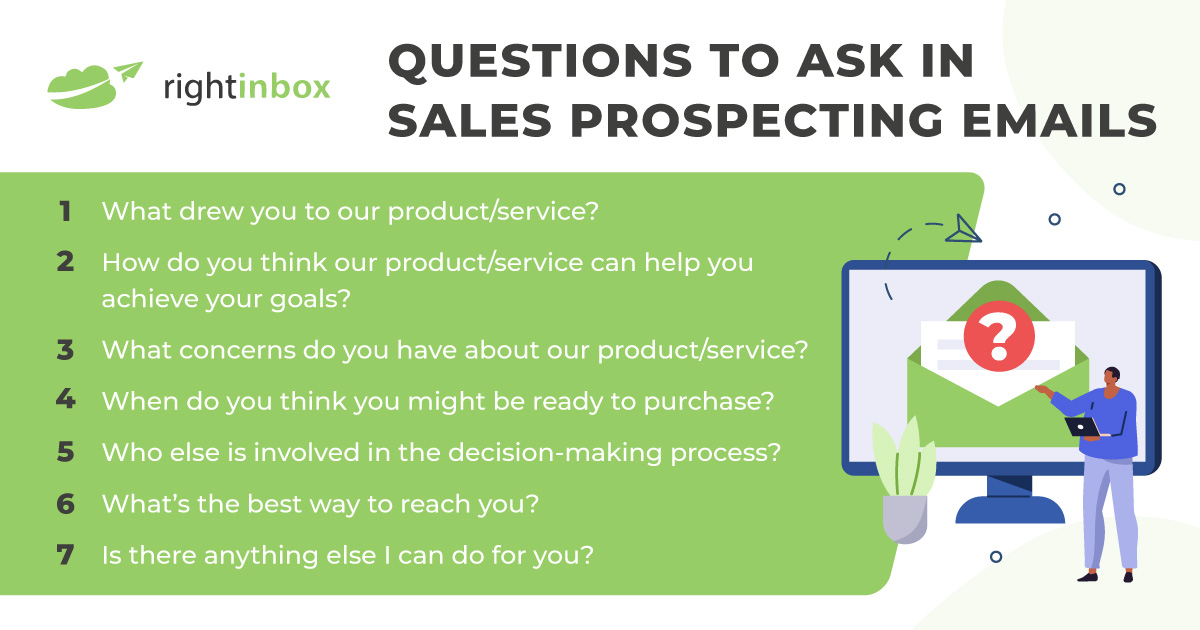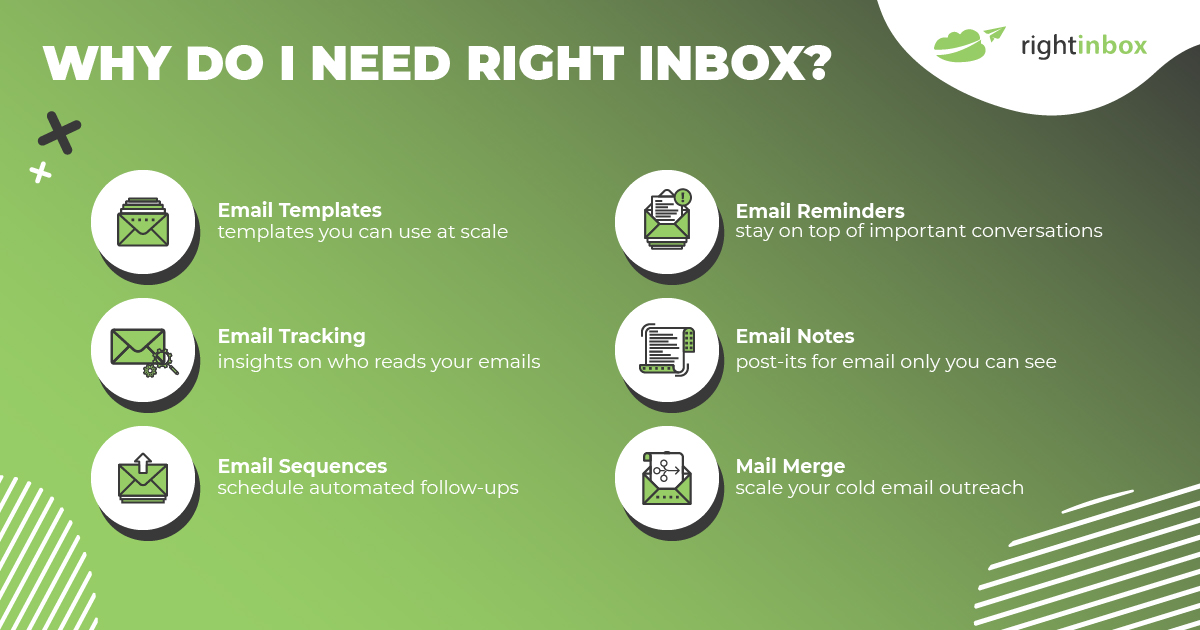Sales prospecting is one of the most important aspects of any sales process. It involves identifying and contacting potential customers in order to create new business opportunities.
But according to 40% of salespeople, prospecting is also one the most challenging parts of selling. This is why it’s so important to do it right.
By following the right steps and using the right techniques, you can make sales prospecting a successful part of your business strategy.
In this guide, we will discuss what sales prospecting is, the steps involved in the process, the benefits of doing it effectively, and how you can get started today!
What Is Sales Prospecting?
Sales prospecting is the process of actively finding new customers that you can sell to, typically by reaching out to leads and attempting to make a connection.

Unlike lead generation and general marketing, sales prospecting typically occurs on a one-to-one basis: that means one sales rep reaches out to one lead at a time and makes a personal connection. Lead generation and marketing, on the other hand, generally attempt to reach large swaths of people at once.
Prospecting is usually carried out by sales development reps (SDRs) and business development reps (BDRs). While other parts of the sales process are concerned with closing on a sale, prospecting focuses on filling up a sales pipeline with qualified leads that account executives can then close on.
What’s the Difference Between Prospects and Leads?
The difference between prospects and leads can be a bit ambiguous, and not everyone agrees as to what separates them. That said, prospects are generally considered to be contacts that have expressed interest or engaged with your brand, while leads have not.
For example, if you found an email for a decision-maker at a company using an email finder tool, then that person is generally considered a lead: they haven’t engaged with you at all. Similarly, if someone filled out an email list signup form, they’d also typically be considered a lead.
However, a prospect is usually a lead who has also engaged with your brand in some way, perhaps by having an exchange over email. On the other hand, some businesses classify prospects as anyone who fits your buyer persona, so the differences can get pretty murky and unclear.
The 5 Steps in the Sales Prospecting Process
Although sales prospecting strategies vary, the overall process typically stays pretty much the same. The steps are:
1. Research
The first step in any sales prospecting process is to research your leads. Usually, this includes qualifying them by asking yourself questions like:
- How well does this lead match our ideal buyer persona?
- Do we service their geographic location?
- What similar products are they currently using? Are they using a competitor’s product?
- Have they expressed any interest in becoming a customer in the past?
Once you’ve qualified your leads, you can start to prioritize and score them so that you can spend more time on the leads you think are most likely to become customers. You don’t need to forget about the lower-quality leads, but you can better understand where they fit into your pipeline this way.
2. Reach Out
Once you know who you’re selling to, it’s time to make the connection. You may choose to do this via email, phone, social media, or any other communication channel. Typically, your goal at this stage is to schedule a meeting.
If you’re reaching out via email, you can use tools like Right Inbox to save time with your outreach. Right Inbox allows you to save your emails as templates, so if you send out the same email to dozens of leads, you won’t have to write it from scratch every time — save it as a template and load it each time you send out an email. Then, just make changes and personalize it as needed.
3. Discuss
If you lock down a meeting with your prospect, you’ll enter the next phase of the process. Here, your goal is to feel out the lead, understand what their needs are, and educate them on what your company can offer.
It’s important to note that you should also be trying to learn whether your lead is actually a fit, not just trying to pressure them into a sale. Selling your product to someone who doesn’t need it can end up being a bad look.
4. Follow Up
Sales don’t always happen during the first meeting. In fact, sales typically require several touch points before they go through, and customers often say no at first.
As a result, following up is of the utmost importance. You can manage your follow-ups manually, but modern sales and communication tools can help increase your efficiency by automating them for you.
Right Inbox, for example, allows you to pre-plan a sequence of emails that will automatically send as long as your lead doesn’t reply. Once you get a response, the sequence is canceled so that a sales rep can take over. Plus, it can also send you reminders, so even if you don’t use the automation features, it can help you stay on top of your follow-ups.
5. Sell
Although closing the sale isn’t necessarily part of the sales prospecting process, it is the ultimate goal. Whether you do it yourself or you hand it off to an account executive, this is where it leads to.

8 Sales Prospecting Tips to Use in 2024
Once you’ve got your sales prospecting process laid out, here are four tips you can use to help you improve upon it.
1. Focus on Building Relationships
Even though closing deals is the ultimate goal, focusing on that can end up making you overly pushy, which isn’t ideal. Instead, concentrate on building strong relationships. When you have that in place, sales will naturally come out of your connections as long as you play your cards right.
2. Use Social Media to Your Advantage
One of the most important parts of sales is building trust — people are always more likely to buy from someone they believe. To create that sense of confidence, you can prove yourself to be a knowledgeable authority in your industry by answering questions and posting on social media sites, like Quora.
3. Understand Your Personas
Sales is an inherently social endeavor. To succeed, you’ll need to know how to act and react when dealing with different types of people. To prepare, study your buyer personas and make flexible game plans on how to approach each one.
4. Leverage Your Network
Most of the time, salespeople aren’t starting out from scratch, even if it may feel like it. When you begin prospecting, make sure you don’t overlook your network — you may have the perfect lead just waiting for you on your LinkedIn.
5. Use a multi-channel approach
With the proliferation of technology, there are more ways to reach your prospects than ever before. In addition to emails and phone calls, consider using SMS, social media, and even snail mail to get their attention.
6. Pay attention to data
Thanks to technology once again, it’s easier than ever to track data and use it to improve your sales process. By understanding which channels are working best, you can focus your energies on the most efficient path to conversion.
7. Always be learning
The best salespeople are always looking for ways to improve, and that means being willing to learn new things. Whether it’s trying out a new tool or taking a course on sales techniques, commit to continually upping your game and you’ll see results.
8. Don’t underestimate the importance of follow-ups
We’ve discussed how following up is a step in the sales prospecting process. But many salespeople make the mistake of giving up too soon.
Remember, it takes 8 touches on average to close a deal. So if you don’t hear back from a prospect after the first few contacts, don’t be afraid to reach out again. It could be exactly what they need to finally take the plunge.
9. Qualify
You need to qualify each prospect in order to see if you can help them. You’re also finding out if they are the kind of customer that you want to have.
After all, it is ethical to sell someone something if you know it’s a good fit. If it isn’t, you can cut your losses and focus on someone who can truly benefit from what you offer.
10. Dig Deep
Ask your prospects why they really want what they say they want. After all, when you peel back the layers, you’ll often find the primary motive for them taking action.
This is like a hot button that will allow you to focus your sales on their priorities. You can highlight the features that will really help them succeed.
11. Hint At Success
You don’t need to make huge promises. In fact, with many products or services, the user is responsible for getting the most value out of it.
Therefore, you can paint a picture of what’s possible without coming off as a pushy salesperson. Finding that balance in your prospecting is the real key.
12. Prove It
Don’t just make claims. Back them up with evidence. Demonstrate to your prospects just how truthful your sales and marketing campaigns are.
This will build a lot of trust — key for getting the final sale at the end of the funnel, call, or marketing campaign.
13. Future Pace
Speak in terms of what the prospect will gain. Talk about their desires, their goals, their perfect world.
This will help them focus on what lies ahead instead of being stuck behind in the past or honing on limiting beliefs.
10 Questions To Ask Your Sales Prospects
Sales is all about questions. And here are 10 powerful ones to ask every time you speak with a prospect:
- What brought you in? – This question and variations of it are crucial, particularly early on. It reminds them why they are interested.
- How soon do you want it? — What timeline is your prospect on? Are they in a hurry, or are they going to take a long time to decide?
- What do you want in the solution? – Are their preferences in how the product or service operates for the customer?
- What’s lacking right now? – What is the pain, or frustration that is causing them to consider purchasing something?
- Are they financially ready? – You need to be careful with this question. But it’s important to avoid wasting time for you and the prospect.
- Is there a reason they wouldn’t be ready? – What kinds of obstacles does the prospect perceive to get what they want now rather than later?
- How did they hear about you? – This creates a great feedback loop with your marketing department.
- Have they seen any results from others? – Do they know about your testimonials? If not, it’s a great time to show them.
- Who else are they considering? – What other products or services are they thinking about right now?
- What happens if they don’t get instant results? – Is the prospect expecting a magic pill? Or do they have reasonable expectations?
Why Is Sales Prospecting Important?
Now that we’ve got a general idea of what sales prospecting is, let’s take a look at why it’s important.
It Develops a Lineup of Potential Customers
Almost every business (with the exception of hedge funds and the like) depends on making sales to survive. And to make sales, you need to have customers.
Sales prospecting is focused entirely on putting together a pipeline of potential customers so that you can make the sales you need. While it’s possible to make sales without prospecting, actively going out and looking for customers gives you more opportunities and helps you develop connections.
It Helps You Understand Your Competition
Sales prospecting is all about connecting with potential customers and engaging them in conversations to qualify and, eventually, convert them.
However, sales aren’t the only benefits that come out of those discussions. In fact, even a conversation that goes poorly can provide great utility: your prospect might tell you what they like about your competitors or why they chose them over you.
This type of feedback straight from the horse’s mouth is invaluable, as it can tell you how you should redirect your efforts to win back the customers you’re losing to your competition.
It Helps Build a Stronger Relationship With Customers
The modern world can feel like a very disconnected and isolating place. Despite how pervasive social media is, in many ways, our society is less social than ever.
Given that cultural background, the direct human interactions that you make with customers as a sales prospector can go a long way towards building a stronger relationship with your customer base. Plus, it can help you better understand them, gather more data to qualify them with, and build a more profitable sales team.
Questions to Ask in Sales Prospecting Emails

Even if you’re not a fan of email, it’s still one of the most commonly used forms of communication sales. So, when you’re sales prospecting, you’re going to have to get comfortable with sending emails.
The key to writing a good sales prospecting email is to make it personal. You want your lead to feel like you’re reaching out to them specifically and not just sending them a generic message.
To do that, you’ll need to do your research and find out as much as you can about your lead. And, to help you get started, here are a few questions you can use in your sales prospecting emails:
- What drew you to our product/service?
- How do you think our product/service can help you achieve your goals?
- What concerns do you have about our product/service?
- When do you think you might be ready to purchase?
- Who else is involved in the decision-making process?
- What’s the best way to reach you?
- Is there anything else I can do for you?
By asking questions like these, you can show your leads that you’re interested in helping them and that you’ve taken the time to learn about their specific situation.
Plus, when it comes to asking sales questions, it’s also important to be aware of the timing. You don’t want to bombard your lead with too many questions too soon, as that can come across as pushy.
Instead, try to space out your questions and spread them out over the course of a few interactions.
Finally, make sure you listen and pay attention to the answers your leads give you. The information they provide can give you valuable insights into their needs and how best to proceed with your sales pitch.
Conclusion
Sales prospecting is one of the first steps in the sales process. Its primary goal is to fill up your sales pipeline and ultimately make sales, but it can also strengthen customer relationships and help you understand your competition.
Tools like Right Inbox can save email templates, provide follow-up reminders, and automate email sequences, which can make you more efficient in your sales prospecting efforts.

Track emails, email reminders & templates in Gmail for free
Upgrade Gmail with the features it’s missing
Add to GmailDavid Campbell
David Campbell is the editor of the Right Inbox blog. He is passionate about email productivity and getting more done in less time.




